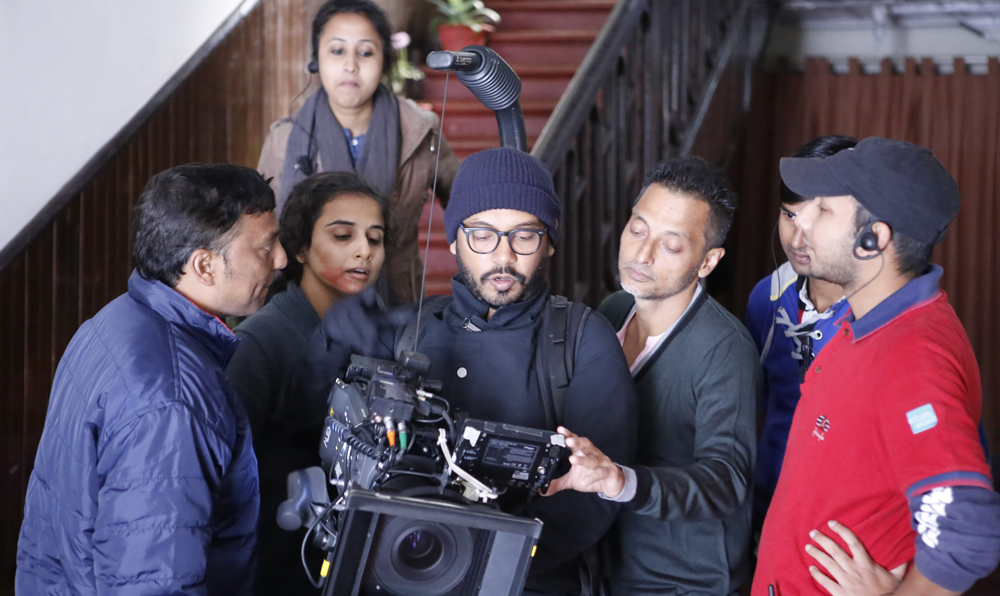As the film begins, you are plunged into the world of the filmmaker. What message does he/she want to convey to us? Are we connected with the storyline? Do we relate ourselves or our near ones with the characters? Does it have the ‘x’ factor to make us sit throughout the movie?
To be one with the audience is the biggest challenge that a director faces. It can make or break the movie. And to get the perfect recipe for making a successful movie, a director needs to be backed up by a team which is in sync with his vision for the film. And that’s exactly what happened with Kahaani 2.
Director Sujoy Ghosh managed to rope in ace TVC cinematographer Tapan Basu who has a reputation for being selective about the projects he takes on. Ghosh had sent a movie script to Basu back in 2013 which Basu politely declined saying that though he likes working on different genres, the first feature film he would like to work on would be a thriller, something on the lines of Kahaani, as that’s where his heart lies. Little did he know that Ghosh would be directing a sequel to it and voila! when the project was finalised, Ghosh immediately brought Basu on board.
The first thing Basu said was that they needed to get a colourist on board. This surprised a lot of people as usually in Bollywood, colourists are never called beforehand. And that’s how Nube studio, founder, Navin Shetty was roped in.
Compared to Basu for whom Kaahini 2 was the first feature film, Shetty has worked on many feature films before like Wazir, Force, and Omkara. Basu and Shetty had first worked together on the movie Kaminey with cinematographer Tassaduq Hussain and since then they partnered on many commercials together.
To know more about the whole experience of working on Kahaani 2, AnimationXpress got talking with cinematographer Tapan Basu (TB) and colourist Navin Shetty (NS). Excerpts from the conversation:
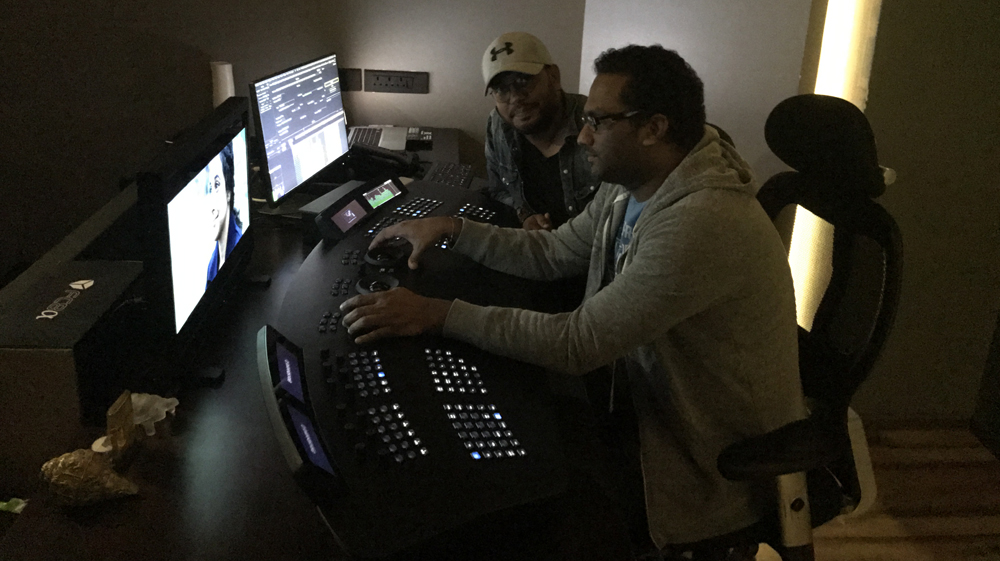
We all know you work on selective movies, what made you say yes for ‘Kahaani 2’?
NS: Tapan likes to work with a fixed set of people as they know his way and style of working. The reason the movie piqued my interest was because of the fact that I knew Tapan was going to do something extraordinary. If you see the whole film, there is a variation. It does not have just one style.
Apart from that, the International film industry involves the colourist right from the beginning. However in India, a colourist isn’t involved during the shooting process normally. 99 per cent of the time, a colourist is never involved in deciding what kind of camera can be used or knows much about the script. So it becomes like a job for them.
For us it was more like an association. I was involved in the storytelling process, the mood of the film, we discussed about the lenses, which led to us having a perfect flow-chart.
Once the team was finalised, how did you go about with the movie?
TB: While reading the script and deciding how to go about with the shoot, Sujoy told me only one thing, “Keep the emotion and mood of the scene intact.” When we read the script, we went through the best choices that would go with the script. The script had the scope of a flashback, present time and had four different locations. For choosing the camera, the decision was solely taken by us and the colourists together. We were riding the tests and we were like “Let’s go for this format” and “Let’s go for the mix format.” Then once we were convinced we brought in the director and took his views.
When we did the tests, we decided that the Kalimpong sequence should be shot on anamorphic lenses on Alexa XT. For Kolkata and Chandan Nagar we decided to shoot with Red Weapon with spherical lenses. That time, Weapon wasn’t available in India so we could not do any tests with it. It got shipped just before our schedule began.
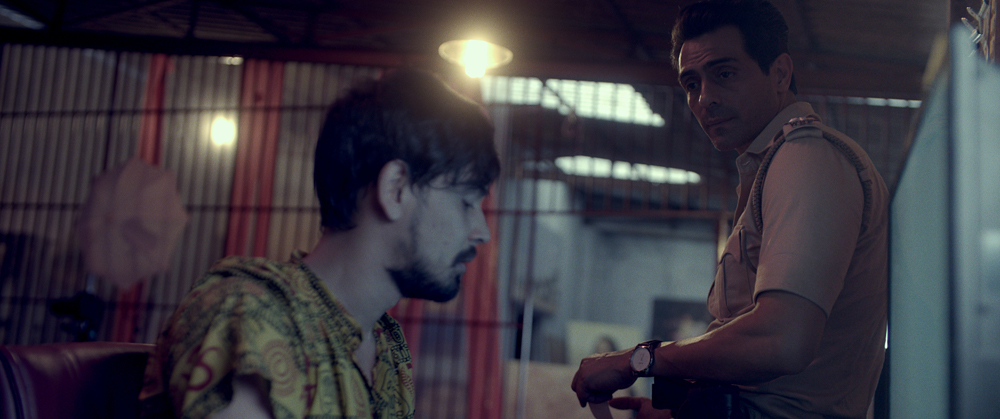
NS: Sujoy and Tapan were always in sync which was very important as it avoided confusion. They were clear. So we just had to improve on what we were doing. Much before the DI (Digital Intermediate) started, we used to do a lot of tests over here (Nube studio), as it then became easy on the DI table to sit and understand where was the project headed. We used to share some footage with Sujoy so that even he could understand what we have. And the best part was we did the trailer first which looked perfect. So we knew this was the space we had to work. We were very clear about those things.
As a colourist, it is important to know what the DOP is trying to portray. With Tapan, I knew the way he shoots by looking at the frame and what he is looking out for. That’s most important – to see from his eyes. I also went to Kolkata, to see the footage to understand where we are, where we can take it. My studio is not equipped for a DI because we don’t have a big screen, so we had to go to Pixel D. I have a monitor, and Sujoy and Tapan were fine with it but the film was going to be shown on a big screen. Sujoy had said they will adjust but adjustment is not what is important, output is. So we thought of going to some other studio which was well-equipped.
As for the colour grading system, I worked on Baselight Two. We used to work on the raw files itself and shared the same with the CG team (Drishyam VFX). Later we used to balance it out.
Take us through the various sequences and what kind of treatment was given to them?
TB: The flashback sequence was shot in Kalimpong. Having studied in the quaint Himalayan hill town of Darjeeling, I understand the environment of hilly places quite well. Kalimpong being a hill station, you will observe more of grey tones in the movie. However, if you see other films, they always try to make it blue. But it’s not blue. There’s always little bit of gray in there. So we decided to go ahead with that.
NS: If you see the whole film, there is a variation: it has different places, different style, different lighting, different moods. You felt it is all real but there is something which gives an edge to the whole thing. So all these small small things, like the Kalimpong early morning walk shot, it’s there, but it’s neutral. We did not have to force ourself to add a cool tone to it.
Tapan was very sure that skin has to be skin and it shouldn’t have a blue tone. The natural light whatever falls on that is okay as long as it’s kept in a neutral space. Those things were different than what we do normally. If some other person would’ve been there, he would forced it to go towards bluer space. Somewhere Sujoy also was majorly influenced by getting this sort of a tone.
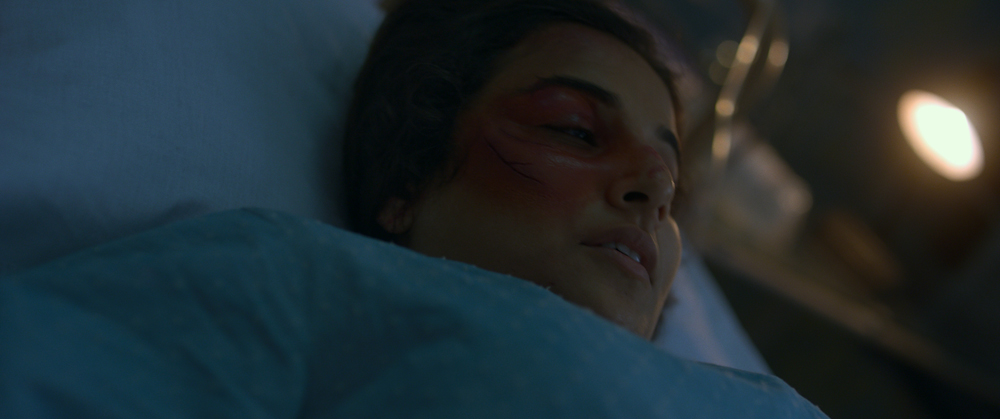
TB: Then we went to Chandan Nagar which was the present day city where Durga (Vidya Balan) resided. Here we took the liberty of putting lots of lights, LED lights, and then we had to choose a camera for rendering as the shot demanded the colours to be a bit more saturated and have a bit of contrast.
In the entire movie, there is a major chunk where Vidya Balan is on the hospital bed as she’s in coma. We had to frequently keep coming back to that scene. However, if you observe carefully, every scene was actually different. That’s because since we’re in the same room, we’re lit by natural sources. In the majority of the shots she’s just lying on the bed, until she wakes up. That’s the only time you actually get to see the mood. It reveals the place, where you see the render, and because she is waking up, you see the flare, which worked well with the narrative. Though I love flaring, which you will observe in my advertisement projects; in the entire movie I used it only six times.
NS: Basically, every day there was a different source of light coming in. That subtle change which he has done, if you watch carefully, when you switch from this scene to that scene, there is a slight difference, and it is kept that way. It’s all kept very subtle, so that the viewers can interpret it the way they want to.
TB: Different sequences demanded different filtration and camera movement. One thing that Sujoy likes is a breathing camera. I thought that just because it is a thriller, it cannot be moving / breathing every time. It has to go with the action. That’s why you will notice that when Vidya is writing, the camera was breathing. When she met with the accident, she was negatively framed. You feel like she is on the edge of the frame. From the beginning to the accident, she is composed very classically. However, during flashbacks, she is centrally composed as the story is being read by Inderjeet Singh (Arjun Rampal). So when one reads about someone else’s life, that person becomes the protagonist and you picture them in the center and not on the sides of a scene.
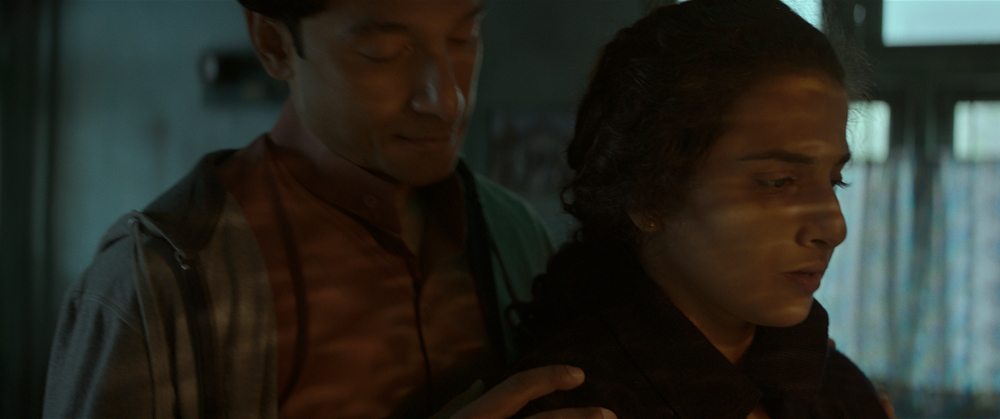
Which was the most challenging shot for both of you?
TB: There was one sequence in particular which I was worried about: it was when the young Minnie is jumping off the roof. Due to the location being a rooftop and the shoot taking place during the day, we couldn’t control anything. There was a constant movement of the sun. I remember taking a shot where I saw clouds coming in. Since it was an intense moment, I couldn’t do anything. We had to correct that and it was done so incredibly that no one had any complaints.
As there were a lot of scene changes, present to flashback, scenes shifting from Kalimpong to Chandan Nagar, there was a constant change of colours. Every scene was cutting from a neutral or a colder space to a warmer space. Also, if you make a space little cold and then you go to warm, it will all look a bit saturated. So you have to be very subtle with the colours. In the end, we managed to keep it consistent.
Sujoy was superbly supportive, he said, “Do what you have to do, do what you feel right.”
NS: One was definitely the rooftop scene. Apart from that the whole film had to get a right space. That was the basic challenge because you have different scenes and every scene had to look true to itself. When changing from one scene to another – which is present to past – your eye shouldn’t jerk, like “what happened?” So that smoothness, the subtle change is what was most important and I think we achieved that.
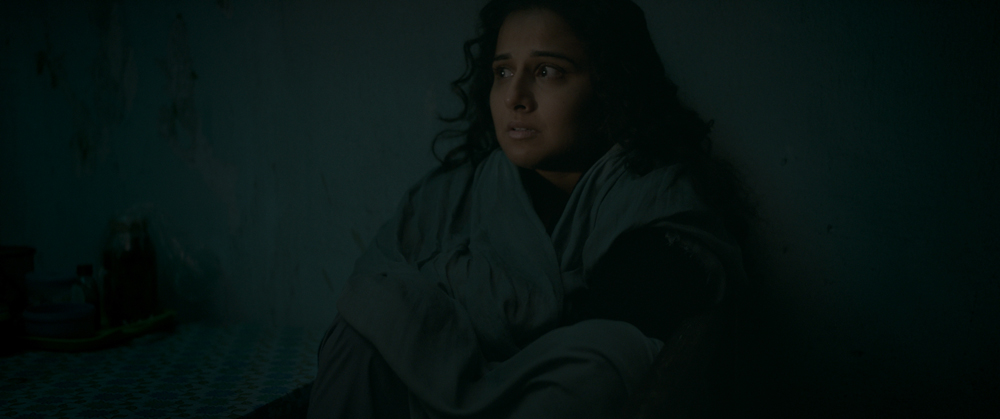
The most interesting scene was the climax when Vidya enters the house at night. It was dark, the only source of light coming was from outside and we had to show just the eyes. These subtle things were tricky to grade. We had to grade such that you could not just see the right information but also the mood should be there that she is in the house and there is a source of light coming from outside. So those things were very interesting as well as challenging for me. This was my best scene.
Another challenge was the end sequence where Jugal Hansraj gets killed. The shoot was taking place from morning to evening and it was already dark, so we had to keep the whole consistency. We tried to manage it.
How many days did you actually work on the movie?
NS: We spent more than a month working on it as there was a lot of CG work. A lot of time got wasted as the CGs had to come in, and only after the CGs came in, we could set the finishing part of it. There were a lot of ups and downs otherwise we would’ve completed it earlier.
TB: The film took about nine months to get completed. We were working till the very last day of this film.
Since Drishyam was the VFX studio, did you both have to co-ordinate with them?
TB: See we had to make it look consistent and real. The DOP and the VFX team, both are equally responsible for the look of the film. So I had to be with the VFX team and make calls.
NS: During the final stage, we had to sit with the VFX team because the deadline was near and we were running short of time. For the finishing touches, we had to go to the studio, check and give a final call on those things.
How was the collaboration with Pixel D?
NS: Pixel D, the confirming team and the data team worked on the movie. It was their team and I came in as a colourist with my assistant. Since I knew some of the colourists over there, that’s how the introduction happened. Our relation with Pixel D was not with them as a whole, but with the technical guy who was responsible for the output.
Overall, they were well organised. Here and there we had hiccups but every day is not perfect. They have a good support staff.
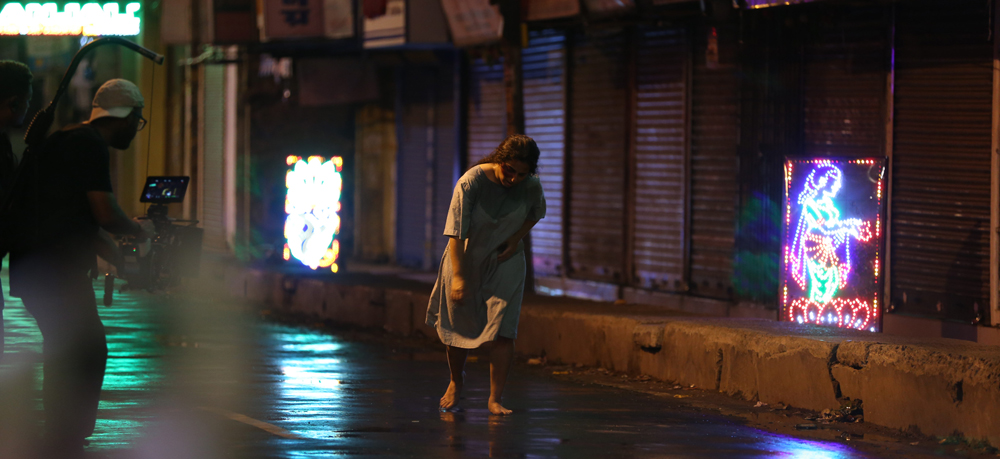
What was the learning from this film?
TB: You learn something or the other every day. This was more of a test for me, from what I had learnt for the last four years. You learn how to handle pressure, and obviously advertising was different. I think a film feature has a whole set of romanticism attached to it. We did have few bad days at shoot but I was comfortable with that fact as it’s part of the journey.
Learning wise, there were a lot of things which I had not done in advertising that I got to do over here. In ads, we shoot one scene a day maybe, and over here, we had to shoot six to seven scenes a day. Also, when you have a strong storyline, there is so much you can do. We have a lot of self-constructed imagery in our head but when you go onto the floor and see the flow of the story, you also need to learn how to sacrifice a good-looking shot just for the story. That was the biggest learning experience.
NS: Our basics were very strong. Once the basics are strong, we can take it to the next level. That’s what he (Tapan) has done. In advertising you need to be versatile. He is probably one of the most versatile DOPs I have seen. He has worked on all types of projects, right from dark to fashion to glossy. And this is the film where everything was there. There were different sets of moods so I think this was a difficult film for him.
Which projects are you currently working on?
NS: Right now I’m not working on any feature. They are still in the pipeline. One film I’ll probably be doing is Devashish Makhija’s. Earlier I was a feature film colourist but I left because I got a chance in advertising and I feel this is the right space to be in, because your commitment to the film is for 25 days. For advertising, one job would be four to five hours so I can put that sort of involvement rather than putting in 25 days. So we select what projects we are doing and you need to gel with the DOP, the production people.
Thankfully, I got the opportunity of selecting my films, which is good. And with selected DOPs, like he (Tapan), Tassaduq. These are the people with whom I can gel well. It is very important to gel well with your DOP otherwise it looks like a job and I don’t want to do a job sort of thing. It should be more like it’s your own film and I can take a call and my call has value.
So for now, we are working on commercials and are back in advertising. We are enjoying this space.
TB: I’m sure we’ll do something exciting, and features take time. If things fall in place then why not? As of now, we are just talking on scripts so we don’t really know.
